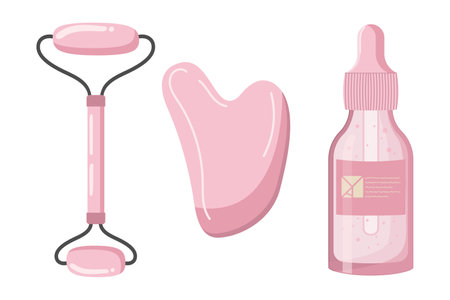1. Introduction: Navigating the First Trimester
The first trimester of pregnancy is an exciting and sometimes overwhelming time for expectant parents in the U.S. With so much information available online, from family, and friends, it’s easy to feel confused about what’s true and what’s not. Why are there so many myths about early pregnancy? The answer lies in a mix of old wives’ tales, cultural beliefs passed down through generations, and the rapid spread of misinformation on social media. Many people mean well, but advice that isn’t backed by science can cause unnecessary worry or lead to unhealthy choices.
Getting the facts straight is especially important during the first trimester because this is when your baby’s major organs are forming and your own body is going through big changes. Reliable, evidence-based information helps you make smart decisions for you and your baby’s health. In the U.S., doctors and healthcare providers encourage parents-to-be to ask questions and seek out trustworthy sources. The table below highlights common reasons why myths about pregnancy are so widespread:
| Source of Myths | Why Myths Spread | How It Affects Parents |
|---|---|---|
| Old Wives’ Tales | Passed down through families over generations | May cause confusion or anxiety about normal symptoms |
| Social Media & Online Forums | Misinformation spreads quickly; not always checked by experts | Leads to conflicting advice and uncertainty |
| Cultural Beliefs | Certain traditions or customs based on local practices | Can influence diet, activity levels, and prenatal care choices |
| Outdated Medical Advice | Medical knowledge evolves but old advice lingers | Parents may follow practices that are no longer recommended |
Understanding where these myths come from—and turning to trusted medical professionals for answers—can help you feel more confident as you begin your pregnancy journey. In this series, we’ll look at common myths about the first trimester and share what science really says.
2. Myth: You Can’t Exercise During the First Trimester
Breaking Down the Myth
A lot of people believe that working out in the first trimester is risky or could hurt the baby. In reality, for most healthy pregnancies, staying active is not only safe but also beneficial for both mom and baby.
Safe Types of Physical Activity
Many forms of exercise are perfectly fine during early pregnancy. Here’s a quick guide to what’s generally considered safe:
| Type of Activity | Examples | Notes |
|---|---|---|
| Low-Impact Cardio | Walking, swimming, stationary cycling | Gentle on joints; helps maintain fitness and boost mood |
| Prenatal Yoga or Pilates | Specialized classes for pregnant women | Improves flexibility, balance, and relaxation |
| Strength Training | Light weights, resistance bands (avoid heavy lifting) | Helps support muscles as your body changes |
| Stretching | Gentle daily stretches | Keeps muscles limber and reduces aches |
Activities to Avoid
- Contact sports (like soccer or basketball)
- High-risk activities (like skiing or horseback riding)
- Exercises that make you lie flat on your back after the first trimester starts to progress
- Overheating or working out in very hot environments (like hot yoga)
The Benefits of Staying Active
- Eases common pregnancy discomforts: Exercise can help reduce back pain, constipation, and bloating.
- Mood booster: Physical activity releases endorphins, helping fight off mood swings and stress.
- Promotes healthy weight gain: Staying active can help you manage weight changes in a healthy way.
- Makes labor easier: Building stamina now can prepare your body for childbirth.
- Lowers risk of gestational diabetes: Regular exercise can help balance blood sugar levels.
No Need to Fear Harming Your Baby
If you have a normal, low-risk pregnancy, moderate exercise won’t harm your baby. Just listen to your body—if you feel dizzy, short of breath, or experience pain, stop and rest. Always check with your healthcare provider before starting any new workout routine to make sure it’s right for you.

3. Myth: Morning Sickness Only Happens in the Morning
Debunking the “Morning” in Morning Sickness
One of the most common misconceptions about pregnancy is that morning sickness only strikes in the morning. In reality, nausea and vomiting during pregnancy (NVP) can occur at any time of day or night. The term “morning sickness” is a bit misleading—it’s just a nickname for a very real symptom that affects many pregnant women, especially in the first trimester.
When Can Morning Sickness Happen?
| Time of Day | How Common? |
|---|---|
| Morning | Very common, but not exclusive |
| Afternoon | Also quite common |
| Evening | Many experience symptoms here too |
| Nighttime | Some feel worse at night or overnight |
What Are the Symptoms?
- Nausea (with or without vomiting)
- Sensitivity to smells
- Lack of appetite
- Fatigue often goes hand-in-hand with nausea
Tips for Managing Nausea Throughout the Day
- Eat small, frequent meals: An empty stomach can make nausea worse. Try eating snacks like crackers, toast, or fruit every 2-3 hours.
- Stay hydrated: Sip water, ginger tea, or electrolyte drinks throughout the day.
- Avoid strong odors: Certain smells can trigger nausea. If possible, avoid cooking or foods with strong scents.
- Keep snacks by your bed: Eating something light before getting up in the morning may help reduce early nausea.
- Try ginger or vitamin B6: Some women find relief with ginger chews, ginger tea, or vitamin B6 supplements (but always ask your healthcare provider first).
- Rest when you can: Fatigue can make symptoms feel worse—listen to your body and take breaks if needed.
If you experience severe vomiting and can’t keep food or liquids down, contact your healthcare provider. This could be a sign of a more serious condition called hyperemesis gravidarum that needs medical attention.
4. Myth: Pregnancy Cravings Are a Must—and Mean Something Specific
Do All Pregnant Women Get Cravings?
One of the most common things people hear about pregnancy is that cravings are inevitable. But not every pregnant woman experiences cravings, especially in the first trimester. In fact, some might feel aversions to certain foods instead! Every pregnancy is different, and while some women do crave pickles and ice cream, others may not crave anything at all.
Do Cravings Reveal Baby’s Gender or Needs?
You might have heard friends or family say that craving sweets means you’re having a girl, or that salty foods mean it’s a boy. Some also believe that cravings signal what your baby needs nutritionally. However, there’s no scientific evidence supporting these ideas. Cravings don’t accurately predict gender or special nutritional requirements for your baby.
Common Beliefs vs. The Facts
| Belief | Reality |
|---|---|
| Craving pickles? It’s a boy! | No link between cravings and baby’s gender. |
| All pregnant women crave strange foods. | Not everyone gets cravings; some experience food aversions. |
| Cravings show what nutrients the baby needs. | No proof cravings match nutritional requirements. |
What Do Cravings Actually Mean?
Pregnancy cravings are likely related to hormonal changes affecting taste and smell. Sometimes, they’re just comfort foods or familiar flavors. As long as cravings don’t lead you to eat non-food items (a condition called pica), they’re usually harmless. Focus on balanced nutrition, listen to your body, and talk with your healthcare provider if you have concerns about your diet during pregnancy.
5. Myth: You Should Eat for Two
Debunking the “Eat for Two” Myth
One of the most common things you might hear after announcing your pregnancy is, “Now you have to eat for two!” While it sounds like a great excuse to indulge, this is actually a misconception. Doubling your calories during the first trimester isn’t necessary and can even lead to unhealthy weight gain.
How Many Extra Calories Do You Really Need?
During the first trimester, your baby is still very tiny and doesn’t require many extra calories. In fact, most healthcare providers in the U.S. recommend that you don’t need any additional calories in these first 12 weeks. Your focus should be on quality nutrition rather than quantity.
Recommended Caloric Intake
| Trimester | Extra Daily Calories Needed |
|---|---|
| First Trimester | 0 (no extra needed) |
| Second Trimester | +340 calories |
| Third Trimester | +450 calories |
Healthy Eating Tips for the First Trimester
- Focus on nutrient-dense foods like fruits, vegetables, whole grains, lean proteins, and dairy.
- Aim for balanced meals that include a variety of food groups.
- Stay hydrated by drinking plenty of water throughout the day.
- If you experience morning sickness, try eating small, frequent meals or snacks.
Nutrients That Matter Most
| Nutrient | Why It’s Important | Good Sources |
|---|---|---|
| Folic Acid | Supports baby’s neural tube development | Leafy greens, fortified cereals |
| Iron | Helps prevent anemia and supports baby’s growth | Lean meats, beans, spinach |
| Calcium | Builds strong bones and teeth for baby | Dairy products, fortified plant milks |
The Bottom Line on Eating for Two
You don’t need to double your portions or calories in the first trimester. Instead, focus on making every bite count with healthy food choices. If you have questions about your diet or weight gain goals during pregnancy, talk to your OB-GYN or a registered dietitian familiar with American prenatal guidelines—they can offer personalized advice that fits your needs and lifestyle.
6. Myth: Miscarriage Is Caused by Everyday Activities
Understanding the Real Risks During the First Trimester
Many people worry that simple, everyday activities could cause a miscarriage during early pregnancy. This is a common fear, but it’s important to know what actually puts a pregnancy at risk and what doesn’t.
Everyday Activities: What’s Safe and What’s Not?
Let’s look at some of the most common concerns:
| Activity | Myth | Reality |
|---|---|---|
| Exercise (walking, light jogging, prenatal yoga) | Could harm the baby or cause miscarriage | Safe for most pregnancies, unless advised otherwise by a doctor |
| Lifting light to moderate objects (groceries, kids) | Can lead to miscarriage | Lifting reasonable weights is usually fine; avoid heavy lifting if your doctor advises against it |
| Stress from work or daily life | Will cause pregnancy loss | Normal stress is not linked to miscarriage, but severe trauma should be discussed with your provider |
| Sexual intercourse | Not safe in early pregnancy | Typically safe unless there are specific medical reasons to avoid it |
What Actually Increases Miscarriage Risk?
Most miscarriages are caused by factors out of anyone’s control. Here are some proven risk factors:
- Chromosomal abnormalities: Most first trimester miscarriages happen because the baby’s chromosomes don’t develop correctly.
- Certain chronic conditions: Health issues like uncontrolled diabetes or thyroid disease may increase risk.
- Smoking, drug use, or heavy alcohol consumption: These behaviors are linked to higher miscarriage rates.
- Advanced maternal age: The chance of miscarriage increases as women get older.
- Certain infections: Some infections can affect pregnancy health.
The Takeaway: Don’t Blame Yourself for Everyday Activities
If you’re worried about something you did causing a miscarriage, remember that normal activities like exercise, lifting light objects, or feeling stressed are generally safe. Always talk to your healthcare provider if you have questions or specific concerns—they’re there to support you every step of the way.
7. Conclusion: Trusting Reliable Sources on Your Pregnancy Journey
The first trimester of pregnancy is filled with excitement and, sometimes, uncertainty. With so much information available online and from well-meaning friends and family, it can be tough to separate myth from fact. That’s why it’s important to rely on qualified medical professionals and trusted resources for your questions and concerns.
Why Trust Medical Professionals?
Doctors, nurse practitioners, and certified midwives have years of training and real-world experience helping expectant parents through pregnancy. They stay up-to-date on the latest research and guidelines, so you get advice that’s based on science—not rumors or outdated beliefs.
Common Trusted Resources in the U.S.
| Resource | Type | What They Offer |
|---|---|---|
| OB-GYN or Midwife | Healthcare Professional | Personalized care, answers to your unique questions |
| Mayo Clinic | Website | Reliable articles on pregnancy health |
| Centers for Disease Control and Prevention (CDC) | Government Website | Guidelines on healthy pregnancies and updates on public health risks |
| American College of Obstetricians and Gynecologists (ACOG) | Professional Organization | Expert recommendations on prenatal care and common concerns |
| Prenatal Classes at Local Hospitals | In-person/Virtual Class | Education and support from certified instructors |
Building Confidence in a Healthy First Trimester
If you ever feel unsure about something you’ve read or heard, don’t hesitate to check with your healthcare provider. No question is too small—they’ve heard them all before! Building a strong relationship with your care team helps you feel more confident as you navigate early pregnancy.
Your Next Steps:
- Ask questions: Bring a list of concerns to your appointments.
- Verify information: Double-check what you hear against trusted sources.
- Avoid misinformation: Social media can be helpful but isn’t always accurate—stick to professional guidance.
- Caring for yourself: Remember, taking care of your physical and mental health is just as important as finding reliable information.
No matter where you are in your first trimester, trusting qualified professionals and reputable resources will help set you up for a healthy and positive pregnancy journey.


